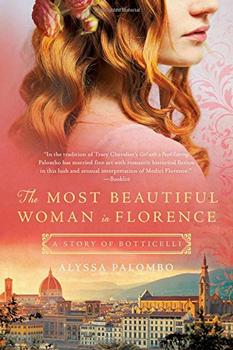Summary | Excerpt | Reading Guide | Reviews | Beyond the book | Read-Alikes | Genres & Themes | Author Bio

A Novel
by Vanora BennettRomance, intrigue, politics,
religion and art come together in Vanora Bennett's
first novel, set against the backdrop of 16th
century England at a time when Protestants, Catholics
and humanists were set on a collision course.
The plot of Portrait of an Unknown Woman
hinges on a hypothesis put forward recently by Jack
Leslau that attempts to explain interesting
differences between two very similar paintings, both
believed to be by Holbein painted a few years apart,
that portray the More family but with subtle
differences between the two pictures. This theory is
key to the entire plot of Portrait of an Unknown
Woman but to go into any detail would result in
a massive plot-spoiler. If you've read the book and
want to know more, you'll find a link in the
sidebar.
At the center of Portrait of an Unknown Woman
is Meg Giggs, Sir Thomas More's twenty-three year
old adopted daughter. Like all the More girls she
has been educated to a far higher standard than is
normal for the day and is well versed in Latin,
Greek and the healing arts (More helped set up St
Paul's school in London, that exists to this day, he
then set up a home school along the same lines for
his own children who became famous across Europe for
their learning).
Although she is devoted to her family, events
conspire to cause Meg to question everything she
thought she knew about her own heart and about
religion. As the danger to More and his family
increases, two men vie for her heart: John Clement,
a man with a murky past who is More's protégé and
the family's former tutor; and the rough and ready
artisan Holbein.
The Thomas More we meet in Portrait of an Unknown
Woman is a far more tortured and complex
character than the benign humanist and family man
portrayed by the inestimable Paul Scofield (who died
last month) in the 1966 movie
The Man For All Seasons or, for
that matter, the maligned adviser to Henry VIII
found in my childhood history books, who lost his
head for sticking to his principles.
Bennett's Thomas More embraced new thinking in his
youth encouraged by the friendship of humanists
such as Erasmus, but as he gets older he grows
increasingly fearful of the growing movement against
the Catholic church driven by people's desire to
read the Bible in English. Fearing for the very soul
of England, More goes to ruthless extremes to stamp
out the heretics who, daring to read the Bible in their
own language, start to question the
very tenets of the Catholic faith and the priests
who, until that time, had a virtual monopoly on the interpretation of
the faith because the vast majority of the
population could not read Latin.
It seems that it's one thing for educated humanists
such as Erasmus and More to sit around pontificating
about changes to the church but quite different when
the common people start taking things into their own
hands!
Of course, as we all know, the great irony in More's
life is that his master, King Henry VIII, raised in the
Catholic faith, known as the Defender of the Faith
for his writings against Luther (ghost written by
More), breaks with Rome in order to expedite his
marriage to Anne Boleyn and seize the massive tracts
of English land owned by the church - thus pitting
More against both the King and the new Protestant
court.
Bennett's writing is a little overwrought at times,
but this is at heart a love-story so a little
overwriting is easy to forgive. Also, a couple of
times a character refers to very recent events with
more of an historian's eye than is perhaps credible
(but nevertheless is a convenient tool for the
reader).
However, Bennett's ability to conjure up the smells,
sights and sounds of 16th century London is
unbeatable. Particularly moving are her
depictions of everyday folk hearing the "Word of the
Lord" in their own language for the first time and
the powerful feelings that this engenders. In
addition, her explanations of a number of
Holbein's paintings will be of interest to all who
have enjoyed books such as Tracy Chevalier's
Girl With A Pearl Earring.
![]() This review was originally published in The BookBrowse Review in May 2007, and has been updated for the
May 2008 edition.
Click here to go to this issue.
This review was originally published in The BookBrowse Review in May 2007, and has been updated for the
May 2008 edition.
Click here to go to this issue.

If you liked Portrait of an Unknown Woman, try these:

by Christina Baker Kline
Published 2018
From the #1 New York Times bestselling author of the smash hit Orphan Train, a stunning and atmospheric novel of friendship, passion, and art, inspired by Andrew Wyeth's mysterious and iconic painting Christina's World.

The Most Beautiful Woman in Florence
by Alyssa Palombo
Published 2017
Alyssa Palombo's The Most Beautiful Woman in Florence vividly captures the dangerous allure of the artist and muse bond with candor and unforgettable passion.
Every good journalist has a novel in him - which is an excellent place for it.
Click Here to find out who said this, as well as discovering other famous literary quotes!
Your guide toexceptional books
BookBrowse seeks out and recommends the best in contemporary fiction and nonfiction—books that not only engage and entertain but also deepen our understanding of ourselves and the world around us.